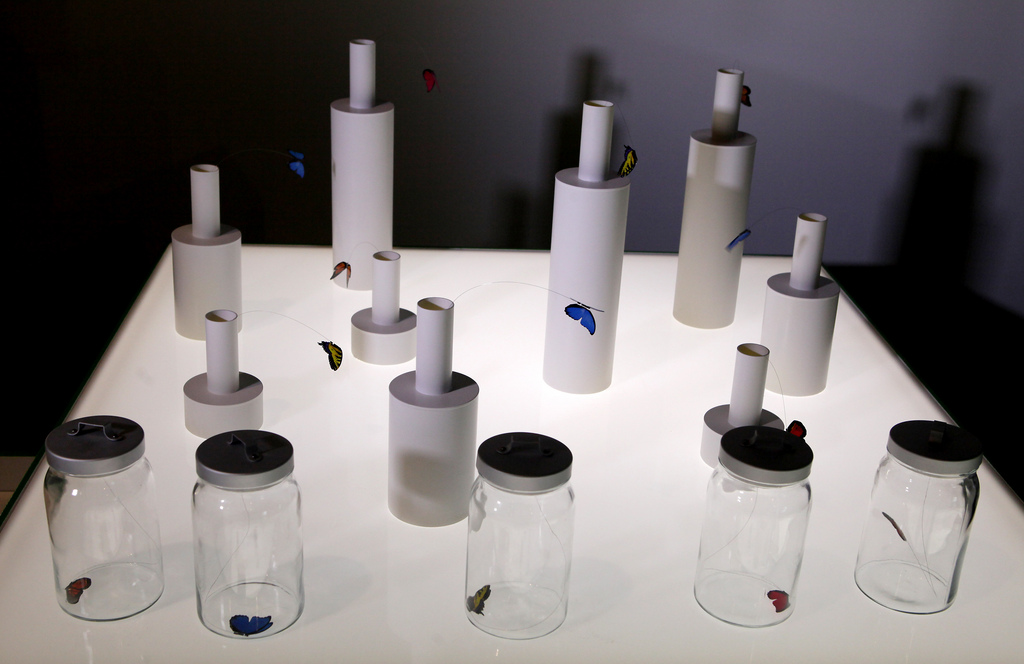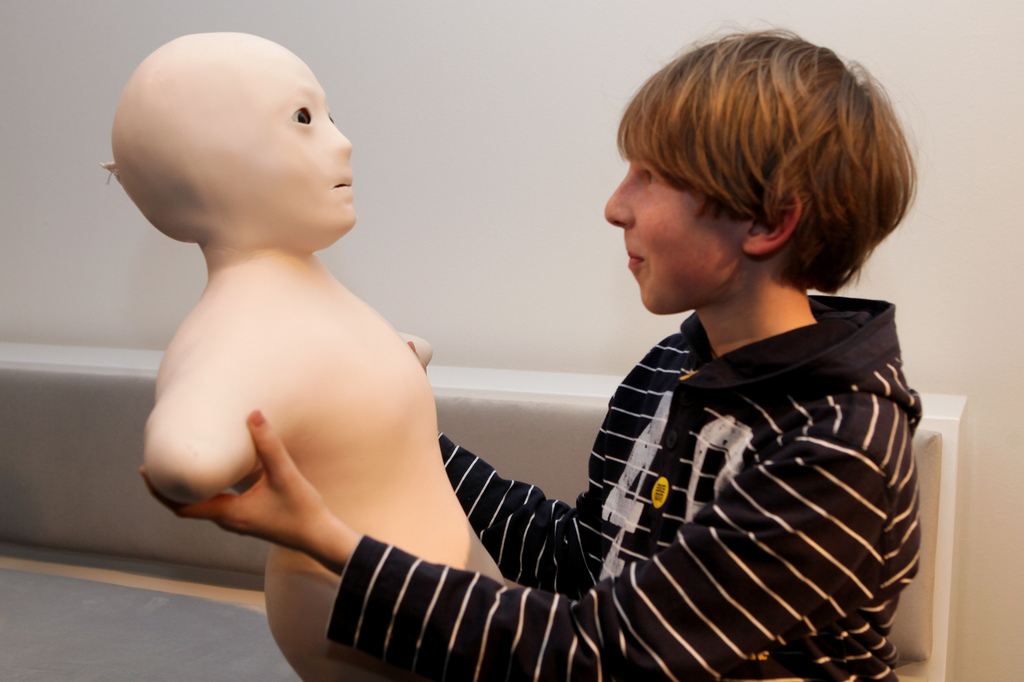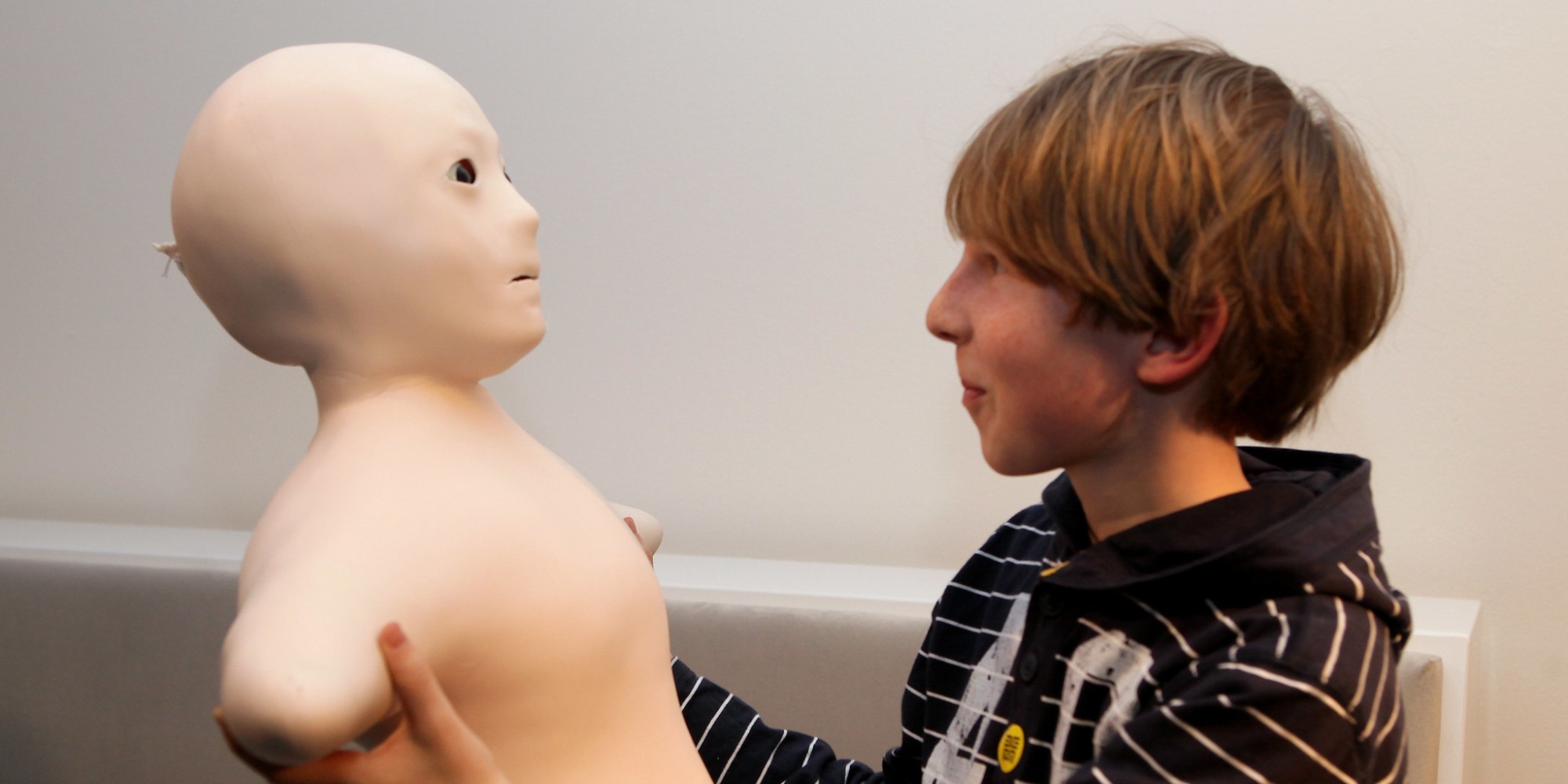Entering the Ars Electronica Center’s Main Gallery, the AEC’s largest exhibition space, brings you face-to-face with “New Views of Humankind.” The installation is divided into four themes, which this blog will elaborate on over the coming weeks. Let’s start things off with Robotinity.

“What can you do here?” is a frequently asked question. Essentially, the point is to show the tremendous extent to which developments in the field of robotics have already become an essential part of people’s everyday life. We have definitively entered an age in which humankind can no longer be uncoupled from our machines—and indeed not only with respect to things like assembly lines in car factories but also the devices that are our constant companions in everyday life. Now, these useful pieces of equipment have come to be things that people (at least those living in industrialized nations) take for granted; other high-tech paraphernalia remain secreted beneath the surface, and often one doesn’t recognize even at second glance that this is a machine and not a natural life form. And this dichotomy as well is addressed by our exhibition.

So then: What can you do here? Well, for one thing, you can frighten mechanical butterflies and watch them flutter about. At first, they seem so incredibly lifelike—reacting differently to noises in their vicinity depending on whether the sounds seem threatening or not. Upon closer examination, you uncover the secret behind these mechanical flying objects—but we’re not going to reveal it here.
If it’s affection you long for, you definitely want to pay a visit to the Lounge, where you’ll encounter, among other creatures, Paro the Baby Seal. Of course, that’s not a real seal curled up on the couch—that wouldn’t be a very nice way to treat a live animal. Paro is a robot used for therapeutic (among other) purposes. Paro reacts when you pet it or call its name, feels neglected when left unattended, loves to receive affection but can get a little testy if it gets pinched or otherwise mistreated. When you hold it in your arms, Paro feels incredibly real—at least for people who’ve never held a real baby seal, and thus for most of us. One feels the urge to care for the cuddly creature, and an extraordinary sort of bonding quickly occurs. This is definitely the ideal pet for kids whose parents don’t want to have to constantly check whether the dog has enough food and water.
Seated nearby is another robot, though its mechanical nature is evident even from afar. Telenoid was developed by Hiroshi Ishiguro, a leading light in the field of robotics. Another one of his works, “Android Theater,” was a featured production at the 2011 Ars Electronica Festival. Telenoid was designed to facilitate telecommunications between two human users. We’re all familiar with the problem: You say something on the phone that could also be interpreted in a different way than it was meant, but because what you’re expressing isn’t accompanied by facial expressions and gestures, the person you’re talking to reacts indignantly and before you know it the conversation has spun off in a different direction than the one you wanted it to go in. This is where Telenoid can help. Each interlocutor has a Telenoid sitting in his/her lap. The robot grasps facial expressions and gestures and reproduces them (as effectively as a robot can at present). It can nod its head, shake its little hands (and even give you a hug), smile, squint, glare with displeasure and get across lots of the little things that have such a big effect on communication. This little guy can really come in handy.

A major portion of Robotinity is devoted to prosthetics. From an auditory implant that makes it possible for deaf people to hear almost perfectly again to an artificial leg that lets an amputee become a high-performance athlete, the spectrum of prostheses is impressive indeed. But one model that’s way out of the ordinary is SiliFulin, a tail prosthesis designed to replace something that a human being doesn’t even possess. Pretty sophisticated electronics monitor the body’s movements and simulate motions of a tail—the ones typical of reptiles, for instance. Anybody looking for a surefire way to attract attention on the dance floor of a disco is on the right track here.
Besides the exhibits described above, there’s lots more to discover in Robotinity, but you don’t have to go about it on your own if you don’t want. Nicole Grüneis is in charge of this area; she and her crew are on the spot to answer your questions if you’re interested in going into detail about a particular area. So, make note of your questions, pester the Infotrainers, and learn a thing or two! Robots are, in any case, more advanced than you might imagine, though they still don’t have all that much to do with Skynet. An outing to the Center is certainly a worthwhile endeavor and definitely helps to break down any inhibitions one might possibly have developed about “technology.”
Mehr Fotos findet man auf Flickr im Robotinity-Set.
